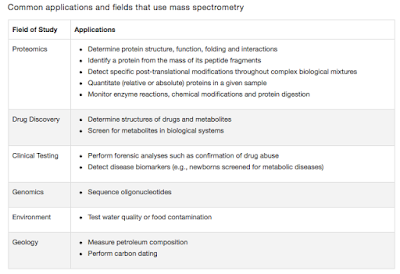Halocins- An atypical defense weapon
Many bacteria don't like other bacteria invading their territory. In a competition to success, one individual produces toxic compounds against other bacteria, and are known as Bacteriocins. These Bacteriocins are often proteins that can attack a narrow or a wide range of other organisms. The bacteriocins can be classified into
Class
|
Feature
|
Example
|
Class 1
|
Small
peptide inhibitors
|
Nisin
|
Class 2
|
Small
(<10 kDa)heat-stable proteins.
Subdivided
into five sub-classses.
|
Aureocin
|
Class 3
|
Heat-labile
(>10 kDa) protein
Subdivided
in two sub-classess
|
Lysostaphin
|
Table:
Classification of Bacteriocins
Image
taken from http://www.ucmp.berkeley.edu/archaea/archaeasy.html
From one of these archaea, scientists were able to isolate a compound called Halocins, (first discovered in 1982). Over the years several halocins have been purified and characterized and three halocin genes coding for H4 (halH4), S8 (halS8), and C8 (proC8) have been cloned (Gosh, Every gene the scientists identify they will clone it!!!). Halocins may be small peptides (Microhalocins) or large proteins (No alternative name as Macrohalocins?). So why have they caught my attention? The reason is they have a wide range of activity against many varieties of bacteria.
Halocins are produced by the bacteria in its stationary phase of growth. This is possibly according to my opinion due to the less availability of various biological requirements (Otherwise the cell should have been in exponential phase) and should make sure their environment is not giving way to other bacteria's to have fun (Makes sense at least to me). Halocin H1 is an exception to this. Another feature of interest is these halocin pre-proteins is transported by "Twin Arginine Translocation Pathway".
So what are the applications? The research is slowly evolving and we are just beginning to understand.A unique mode of action is that they have a pore-forming action (Kind of drilling the cell wall with a driller), production and maintenance of energetic ion gradients across the membrane which is quite lethal to other bacteria. H7 is shown to inhibit the Na+/ H+ antiporter. So they can also be used in treatment of repurfusion injury.
Halocins are not the only one which is now in the limelight. Another group of compounds called as sulfolobicins (First discovered in year 2000) may interest you. But they are not secreted into culture media or don't have a wide range of activity like that of halocin. So my safe bet is Halocins have a better chance of being used in future as a pharmacological compound (At least as a possible antibiotic)
Further reading:
1. Mei S etal. The helix-loop-helix motif at the N terminus of HalI is essential for its immunity function against halocin C8. J Bacteriol. 2008 Oct;190(19):6501-8.
2. O'Connor EM, Shand RF. Halocins and sulfolobicins: the emerging story of archaeal protein and peptide antibiotics.
Halocins are produced by the bacteria in its stationary phase of growth. This is possibly according to my opinion due to the less availability of various biological requirements (Otherwise the cell should have been in exponential phase) and should make sure their environment is not giving way to other bacteria's to have fun (Makes sense at least to me). Halocin H1 is an exception to this. Another feature of interest is these halocin pre-proteins is transported by "Twin Arginine Translocation Pathway".
So what are the applications? The research is slowly evolving and we are just beginning to understand.A unique mode of action is that they have a pore-forming action (Kind of drilling the cell wall with a driller), production and maintenance of energetic ion gradients across the membrane which is quite lethal to other bacteria. H7 is shown to inhibit the Na+/ H+ antiporter. So they can also be used in treatment of repurfusion injury.
Halocins are not the only one which is now in the limelight. Another group of compounds called as sulfolobicins (First discovered in year 2000) may interest you. But they are not secreted into culture media or don't have a wide range of activity like that of halocin. So my safe bet is Halocins have a better chance of being used in future as a pharmacological compound (At least as a possible antibiotic)
Further reading:
1. Mei S etal. The helix-loop-helix motif at the N terminus of HalI is essential for its immunity function against halocin C8. J Bacteriol. 2008 Oct;190(19):6501-8.
2. O'Connor EM, Shand RF. Halocins and sulfolobicins: the emerging story of archaeal protein and peptide antibiotics.





Comments
Post a Comment